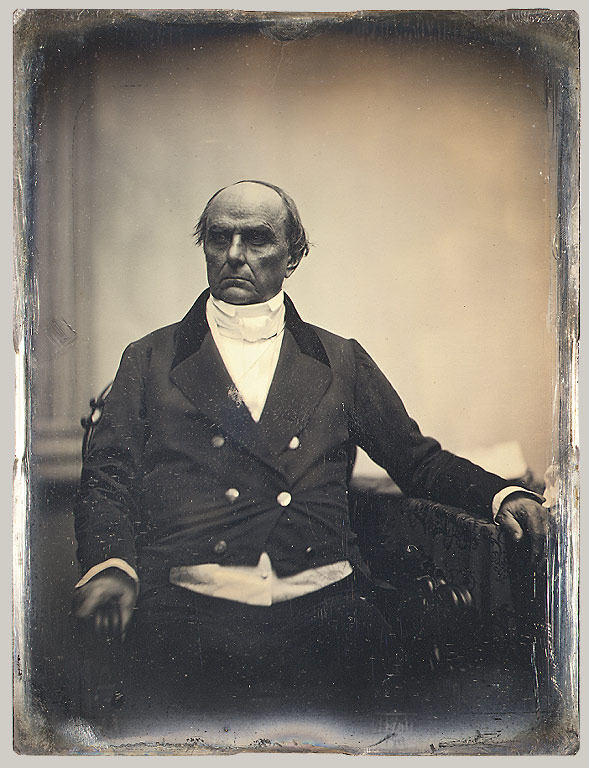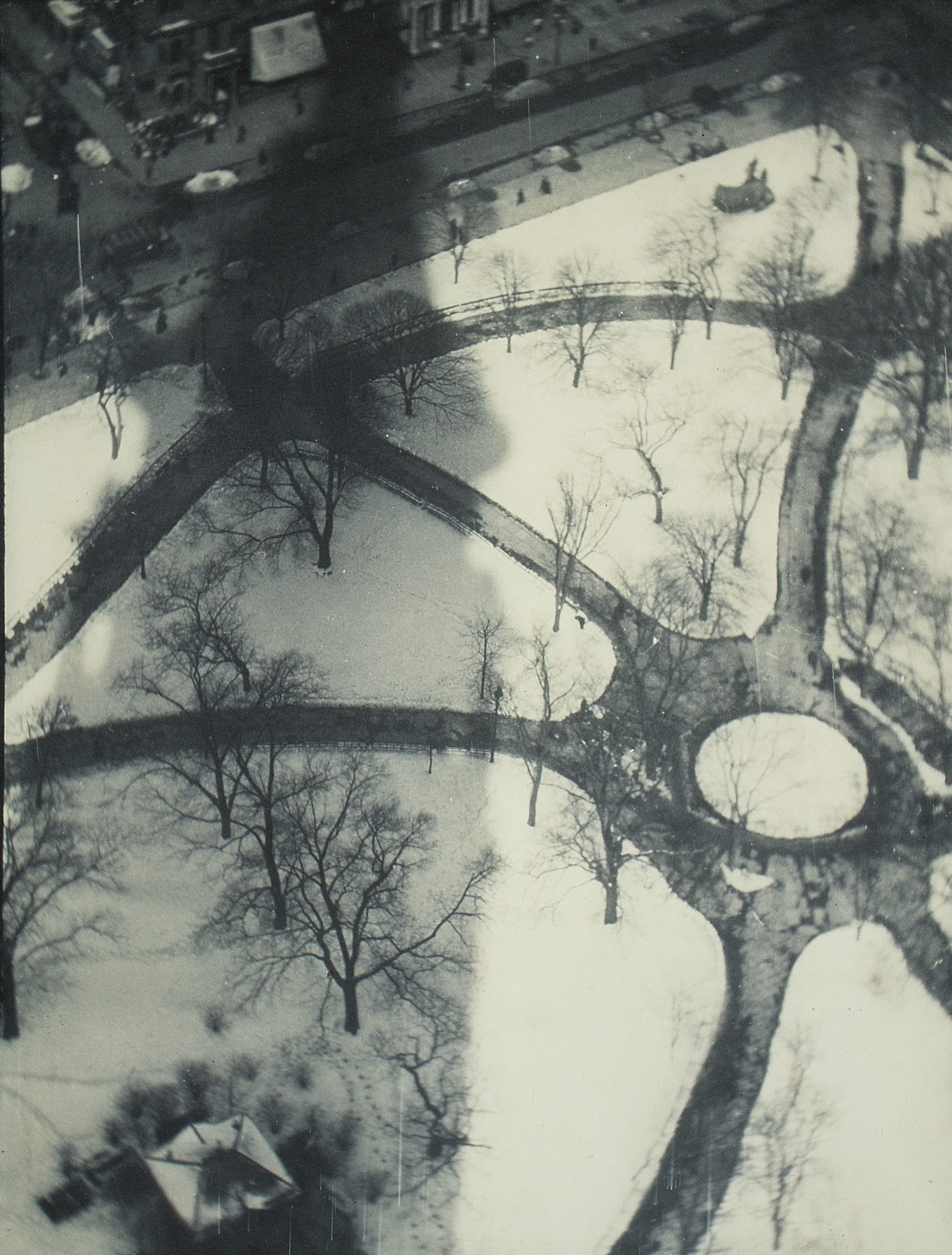Friday, December 14, 2012
Masters of American Photography
Dramatic black and white photographs taken by 20 of the nation's most important and influential photographers were featured on new commemorative postage stamps issued June 13, 2002 by the United States Postal Service.
The Masters of American Photography stamps were available in a pane of 20
stamps that includes examples of portrait, documentary, landscape and fine
art photography. Many of the major themes and events in U.S. history,
including immigration, the Great Depression and World War II, are captured
in these compelling images. Arranged in chronological order, the stamps also
offer a visual sampling of the history and development of photography in the
United States.
The pane includes a black-and-white selvage photograph taken in 1888 or
1889 by William Henry Jackson or one of his assistants. The photograph
depicts a photographer using a mammoth-plate camera precariously balanced
atop Overhanging Rock, some 3,200 feet above Yosemite Valley in California.
With his keen appreciation for natural vistas, Jackson chose field
photography as a way of life and was noted for his landscapes of the
American West. This picture dramatically illustrates some of the challenges
frontier photographers faced in pursuit of just the right subject and
viewpoint.
Also featured on the pane are photographs by the following:
a.. Albert Sands Southworth (1811-1894) and Josiah Johnson Hawes
(1808-1901)
(From the Museum of Fine Arts, Boston; Boston, Mass.)
Among the finest daguerreotypists of their day, Southworth and Hawes
achieved international prominence for their captivating portraits and views.
Their Boston studio's eminent clients included Senator Daniel Webster; this
c. 1850 portrait of the statesman and political orator vividly captured his
indomitable character.
b.. Timothy H. O'Sullivan (1840-1882)
(From the Library of Congress, Washington, D.C.)
Known for his Civil War pictures and western landscapes, O'Sullivan was a
field photographer highly regarded for his daring compositional style based
on technical proficiency and visual artistry. He made this photograph of
General Ulysses S. Grant and his officers on May 21, 1864, looking down from
a window of Massaponax Church in Virginia.
c.. Carleton E. Watkins (1829-1916)
"Cape Horn, Columbia River" 1867
(From the Oregon Historical Society, Portland, Ore.)
One of the best landscape photographers of the 19th century, Watkins used
a specially constructed mammoth-plate camera to record the scenic grandeur
and burgeoning development of the American West. "Cape Horn, Columbia
River," 1867, reveals his refined artistic vision, extraordinary eye for
composition, and flawless technique.
d.. Gertrude Käsebier (1852-1934)
"Blessed Art Thou Among Women"
(From the Library of Congress, Washington, D.C.)
Eminent portrait photographer Käsebier, whose best known images are those
of mothers and children, pioneered an evocative soft-focus style that
established her as a guiding force in the pictorialist movement. "Blessed
Art Thou Among Women," a sensitive and artistic portrayal of author Agnes
Rand Lee and her daughter Peggy, was made in 1899.
e.. Lewis W. Hine (1847-1940)
"Looking for Lost Baggage, Ellis Island" 1905
(From the George Eastman House, Rochester, N.Y.)
Documentary photographer Hine also achieved fame as a social reformer.
Best known for pictures of immigrants, child laborers, and industrial
workers, Hine viewed his subjects with compassion and their harsh
surroundings with an unflinching eye. "Looking for Lost Baggage, Ellis
Island," 1905, captured the uncertain hope of newly arrived immigrants.
f.. Alvin Langdon Coburn (1882-1966)
"The Octopus" 1912
(From the George Eastman House, Rochester, N.Y.)
An innovative photographic artist, Coburn utilized soft-focus techniques,
unusual perspectives, and abstract compositions. "The Octopus," 1912, made
by looking down on Madison Square Park from atop a Manhattan skyscraper, is
an early example of modern photography that expresses the visual dynamic of
the new metropolis.
g.. Edward Steichen (1879-1973)
"Lotus, Mount Kisco, New York" 1915
(From the George Eastman House, Rochester, N.Y.)
A remarkably versatile photographer, Edward Steichen played a pivotal role
in elevating photography to a fine art. "Lotus, Mount Kisco, New York,"
1915, reveals his mastery of the medium, as well as his belief that the
forms found in nature helped validate the turn toward abstraction in early
20th-century art.
h.. Alfred Stieglitz (1864-1946)
"Hands and Thimble" 1920
(From The Art Institute of Chicago; Chicago, Ill.)
A seminal figure in American art and photography, Stieglitz championed the
idea of photography as a distinct art medium and continually challenged its
technical limits and pictorial conventions. "Hands and Thimble," is one of
more than 300 images he made over the course of 20 years that together form
an extended portrait of the painter Georgia O'Keeffe, whom he married in
1924.
i.. Man Ray (1890-1976)
"Rayograph" 1923
(From the Man Ray Trust, Hicksville, N.Y.)
Man Ray, an artist who worked in all media, expanded the limits of
photography with innovations such as the cameraless images he called
rayographs, made by placing objects on photographic paper and exposing the
arrangement to light. The mazelike spiral design in "Rayograph," shows his
imaginative method of creating abstract pictures.
j.. Edward Weston (1886-1958)
"Two Shells" 1927
(From the Estate of Edward Weston, Carmel, Calif.)
Weston, an early proponent for the unmanipulated, sharp-focused realism of
"straight" photography, sought to capture the quintessence of his subjects.
Acclaimed for the tonal beauty and technical precision of his landscapes,
nudes, portraits and still lifes, Weston made many photographs-including
"Two Shells"-that are considered icons of modernism.
k.. James VanDerZee (1886-1983)
"My Corsage" 1931
(From Donna Mussenden VanDerZee, New York, N.Y.)
VanDerZee was the preeminent African-American portrait photographer in New
York City between the two World Wars. Commissioned by celebrities and
ordinary people alike, as well as by organizations, his formal portraits and
group pictures captured the vitality of the Harlem Renaissance. His
distinctive pictorial style is evident in "My Corsage," 1931.
l.. Dorothea Lange (1895-1965)
"Ditched, Stalled, and Stranded, San Joaquin Valley, California" 1935
(From the Library of Congress, Washington, D.C.)
A deeply compassionate documentary photographer, Lange is best known for
her compelling pictures of the unemployed and uprooted victims of the Great
Depression. With an empathetic eye she recorded not only their impoverished
circumstances, but also their fortitude and spirit. "Ditched, Stalled, and
Stranded, San Joaquin Valley, California," 1935, reflects her intimate
portrait style.
m.. Walker Evans (1903-1975)
"Washroom and Dining Area of Floyd Burroughs' Home, Hale County, Alabama"
1936
(From the Library of Congress, Washington, D.C.)
Evans found beauty in the commonplace and turned documentary photography
into an art form. Made during the summer of 1936, his now classic
photographs of three sharecroppers, their homes and their families-which
were published in the eloquent book "Let Us Now Praise Famous Men"-are
emblematic of how we have come to visualize the austerity of the Great
Depression.
n.. W. Eugene Smith (1918-1978)
"Frontline Soldier with Canteen, Saipan" June 1944
(From the Center for Creative Photography, Tucson, Ariz.)
Highly respected for his brilliant and compassionate photo-essays, Smith
was one of America's most acclaimed photojournalists. During World War II,
he gained a reputation for pictures that showed both the horror of war and
the heroism of soldiers under fire, including "Frontline Soldier with
Canteen, Saipan," June, 1944.
o.. Paul Strand (1890-1976)
"Steeple" 1946
(From the Paul Strand Archive, Millerton, N.Y.)
Strand, whose cubist, nearly abstract photographs broke new ground during
the second decade of the 20th century, applied a similar geometric
complexity to the broad range of straight photography that he advocated
thereafter. "Steeple," 1946, from his book "Time in New England," is typical
of Strand's modernist compositional style, emphasizing form, light and
space.
p.. Ansel Adams (1902-1984)
"Sand Dunes, Sunrise" 1948
(From The Ansel Adams Trust, Mill Valley, Calif.)
Renowned art photographer and environmental leader Adams was praised for
his sublime interpretations of the dramatic beauty found in the western
landscape. Rendered with a naturalist's precision and a pictorialist's
virtuosity, "Sand Dunes, Sunrise," 1948, reveals the sharpness of detail and
rich tonal range-from deepest black to purest white-that are hallmarks of
his work.
q.. Imogen Cunningham (1883-1976)
"Age and Its Symbols" 1958
(From The Imogen Cunningham Trust, Berkeley, Calif.)
A photographer of exceptional sensibility and one of the founders of
modernist photography, Cunningham is best known for her plant studies and
portraits. In a departure from her earlier romantic pictorial style, she
began making sharply focused, realistic photographs in the 1920s. "Age and
Its Symbols," 1958, a portrait of Ida C. Pabst, is compelling for its
revealing personal intimacy.
r.. André Kertész (1894-1985)
(From the Estate of André Kertész, New York, N.Y.)
By combining simple, personal observation with compassionate interest in
the human condition, Hungarian-born Kertész made carefully balanced yet
spontaneous photographs infused with the appealing brightness and wit he
found in the urban experience. The dramatic play between pattern and deep
space in this New York cityscape reveals Kertész's mastery of complex
composition.
s.. Garry Winogrand (1928-1984)
(From the Fraenkel Gallery, San Francisco, Calif.)
Fascinated with photographing people on the street, Winogrand originated
an approach to candid photography that extended the scope of the documentary
tradition. This 1965 work is typical of Winogrand's whimsical view of
contemporary urban life: the random mixing of pedestrians, their chance
gestures, and the interactions of men and women.
t.. Minor White (1908-1976)
"Bristol, Vermont" 1971
(From The Minor White Archive, Princeton, N.J.)
A major figure in the expressive movement in art photography, White was an
innovative photographer intent on conveying deep personal feelings through
his work. Committed as well to the spiritual and the sacred in art, White
excelled in using symbolic representation, as depicted in "Bristol,
Vermont," 1971. The arrow on this snowy road represents the concept of
passage.
Peter C. Bunnell, McAlpin Professor of the History of Photography and Modern
Art at Princeton University, served as the main consultant for this project.
Professor Bunnell is also faculty curator of photography at The Art Museum
at Princeton and curator of the Minor White Archive.














.jpg)



.jpg)

